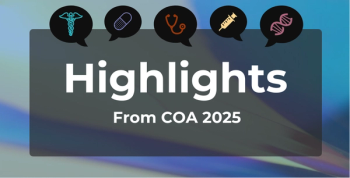
Studies Evaluate Use of Adherence Estimator in Asthma Treatment
Asthma is among the diseases for which adherence presents challenges, both to physicians and to manufacturers of therapies. Two studies presented Saturday at the 2014 Annual Meeting of the American Academy of Allergy, Asthma & Immunology in San Diego, California, discuss an attempt by one manufacturer, Merck, to overcome the problem through the development of an adherence estimator called AE.
No matter what the condition, no drug a doctor prescribes will work if patients do not take it. Thus, the challenge of getting patients to take medication as prescribed—known as adherence—has been discussed frequently in The American Journal of Managed Care and elsewhere. Patients offer reasons from cost to side effects to simple forgetfulness as reasons why they don’t take medication.
Asthma is among the diseases for which adherence presents challenges, both to physicians and to manufacturers of therapies. Two studies presented Saturday at the 2014 Annual Meeting of the American Academy of Allergy, Asthma & Immunology in San Diego, California, discuss an attempt by one manufacturer, Merck, to overcome the problem through the development of an adherence estimator called “AE.”
Edan Sarid, MD, and Rauno Joks, MD, investigated how the use of the AE could allow targeted interventions with those adult patients most at risk for not taking asthma medication, and it also allowed the examiners to address 3 chief reasons for noncompliance: concerns about the medication, commitment to the schedule, and cost.1
The AE tool assigns a weighted numerical score for: (1) concern regarding possible harm from the medication; (2) the patient’s level of commitment based on perceived need for the medication; and (3) the financial burden paying for the medication might represent. Scores were measured for 32 adults treated as outpatients for persistent asthma based on guidelines from the National Heart, Lung and Blood Institute Expert Panel Report 3.
At the start of the study, 16 of the study participants (50%) were found to be at-risk, and received targeted education on all 3 topics. Of the original group, 28 were available for follow-up, including 13 from the at-risk group and 15 who were not at risk. Targeted education included counseling and a review of handouts about the risks of not taking medication, the benefits of doing so, and referrals for financial assistance for those who needed it.
When the patients were retested after the intervention, there was a significant decrease in the AE score, pointing toward greater adherence. The decrease was due to the change in the level of concern about side effects. Decreases in nonadherence due to commitment and cost were not statistically significant. Drs Sarid and Joks concluded that the educational intervention could trim the risk of patients not taking medication due to fears about side effects.
A second study released Saturday asked whether the AE survey, and the score it produced, could be a reliable measure of adherence in a hard-to-treat population: preteens and teenagers with severe asthma.
Researchers led by Jigar Patel and Vanessa Y. Cavero, MD, compared AE scores to values of exhaled nitric oxide (FeNO) levels and the Asthma Control Test (ACT) in 45 test subjects recruited to a clinic.2
The patients were ages 7 to 18, and were prescribed inhaled corticosteroid (ICS) therapy at high doses (ICS ≥1000 mcg/day). This age group is particularly at risk for ending up in the emergency department or for being admitted to the hospital due to asthma attacks.
The patients’ FeNO measures were recorded, and charts were reviewed for patient demographics and other medications. Patients and their parents filled out the AE survey.
The results did not find a strong correlation between the AE survey score and the other tests. Twenty-four patients (53.3%) had a high FeNO level (≥20 ppb) and 28 patients (62.2%) had poorly controlled asthma according to ACT. However, only 4 patients (8.9%) were considered high risk for nonadherence.
There was no significant linear relationship between FeNO and adherence score (rho = —0.01) or between FeNO and ACT Score (rho = –0.12). These coefficients were neither statistically significantly different from zero, nor greater than –0.55 (all P >.05). There was a very weak, negative association between adherence score and ACT score; rho = —0.32 was statistically significantly different from zero (P = .03) but was not significantly greater than —.55 (P >.05).
The researchers concluded that a different questionnaire should be developed for determining the risk of adherence among this group.
References
- Sarid E, Joks R. Targeted eEducation of adult patients from an inner city population at risk for non-adherence with asthma therapy. J Allergy Clin Immunol. 2014;133(2):1A-4A (suppl);Abstract 54.
- Patel J, Cavero VY, Perkins A, Minto H, Morales, MB. Evaluation of a medication adherence estimator survey compard to exhaled nitric oxide (FeNO) levels and asthma control test in difficult-to-treat/severe pediatric asthma patients. J Allergy Clin Immunol. 2014;133(2):1A-4A (suppl); Abstract 155.
Newsletter
Stay ahead of policy, cost, and value—subscribe to AJMC for expert insights at the intersection of clinical care and health economics.







































